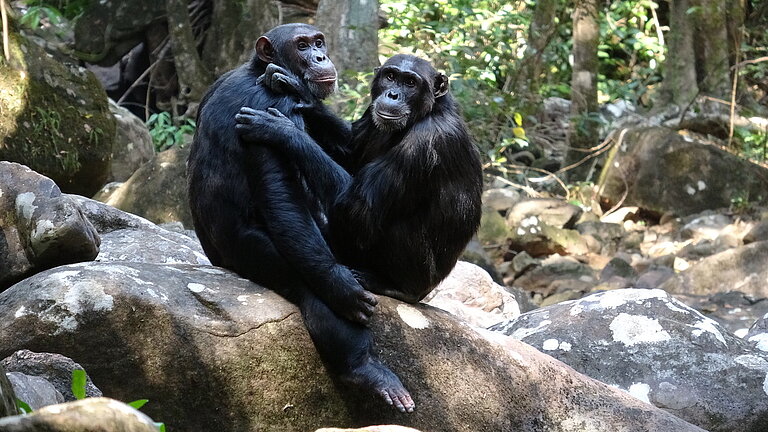In the savannah-mosaic habitat of Issa Valley in Tanzania, researchers investigated how open environments affect the behaviour of adult chimpanzees. Contrary to expectations, arboreal behaviour was not reduced, but there were exaggerated sex differences, with adult females being more arboreal than adult males. Unexpectedly, in all individuals increased levels of suspensory locomotion were observed, suggesting that this may be an adaptive strategy for navigating sparse tree canopies. These results challenge traditional notions of behaviour and habitat and may reshape our understanding of hominin evolution.
How chimpanzees adapt to open habitats
Many early fossil hominins are associated with savannah-mosaic paleohabitats. Reconstructing how hominins behaved in open habitats is essential for understanding the selective context in which defining hominin traits, such as bipedalism, evolved. However, behavioural reconstructions are limited by a lack of studies of extant apes living in analogous habitats. Rhianna Drummond-Clarke, a PhD student in the Department of Human Origins at the Max Planck Institute for Evolutionary Anthropology, and colleagues aim to provide the first detailed characterisation of the positional behaviour of adult chimpanzees living in a savannah-mosaic habitat, Issa Valley, Tanzania. Following previous results emphasizing the importance of arboreal niche for chimpanzees living in an open habitat (Drummond-Clarke et al., 2022), in a new study, the authors specifically tested whether Issa chimpanzees show greater sex differences in arboreality and positional behaviour than their forest-dwelling counterparts.
Open habitats impact arboreal behaviour in chimpanzees
Using 15 months of behavioural observations, the team compared the positional behaviour of adult females and males both within Issa and with previously studied forest communities. "We found that open habitats do not induce less arboreal behaviour in either sex, but may drive sex differences in positional behaviour through high female arboreality", says Drummond-Clarke. “Open habitats are associated with high energetic and predator pressures compared to forests, which may explain the high levels of arboreality we observed at Issa. These pressures could be doubled for reproducing females, which also have to care for their dependent young”. In addition, Issa chimpanzees surprisingly showed high levels of suspensory locomotion, a behaviour not previously associated with open habitats, but which the researchers suggest may be adaptive for effectively navigating an open canopy. The team's findings challenge the traditional assumption that open habitat selects for reduced arboreality, and have implications for interpreting how sexual dimorphism can influence reconstructions of hominin positional behaviour.
Original publication:
Rhianna C. Drummond-Clarke, Tracy L. Kivell, Lauren Sarringhaus, Fiona A. Stewart, Alex K. Piel
Sex differences in positional behavior of chimpanzees (Pan troglodytes schweinfurthii) living in the dry and open habitat of Issa Valley, Tanzania
American Journal of Biological Anthropology, 26 July 2024, https://doi.org/10.1002/ajpa.25007
Contact:
Rhianna Drummond-Clarke
Department of Human Origins
Max Planck Institute for Evolutionary Anthropology, Leipzig
rhianna_drummond_clarke@[>>> Please remove the text! <<<]eva.mpg.de
Sandra Jacob
Press Officer
Max Planck Institute for Evolutionary Anthropology, Leipzig
+49 341 3550-122
jacob@[>>> Please remove the text! <<<]eva.mpg.de
